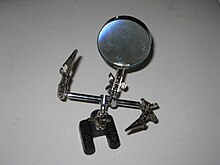Pic LR 007
I have a PF5102 JFET that has the same pin out as the MPF 102.
From the left with the flat side facing you and the leads pointing down. 1. Drain 2. Source 3. Gate
You see on the data sheet it says "N-CHANNEL SWITCH"
No big deal, this JFET can still function as a preamp, it doesn't have to be used as a switch.
The designers may have intended for it to be a switch, and optimised it for such, but it will work just fine as a preamp in this circuit.
I always like to get the data sheet for whatever device I'm working with, for the proper pinout.
It's important to get it installed correctly!
Pics LR 008 to 010
Different views of how/where the JFET is placed.
I have a PF5102 JFET that has the same pin out as the MPF 102.
From the left with the flat side facing you and the leads pointing down. 1. Drain 2. Source 3. Gate
You see on the data sheet it says "N-CHANNEL SWITCH"
No big deal, this JFET can still function as a preamp, it doesn't have to be used as a switch.
The designers may have intended for it to be a switch, and optimised it for such, but it will work just fine as a preamp in this circuit.
I always like to get the data sheet for whatever device I'm working with, for the proper pinout.
It's important to get it installed correctly!
Pics LR 008 to 010
Different views of how/where the JFET is placed.



 with one preamp!!! Now you got somethin' cowboy!!! :lmao:
with one preamp!!! Now you got somethin' cowboy!!! :lmao:




